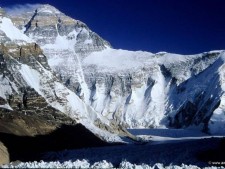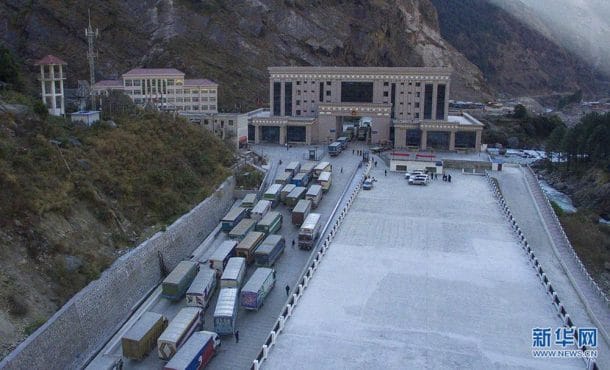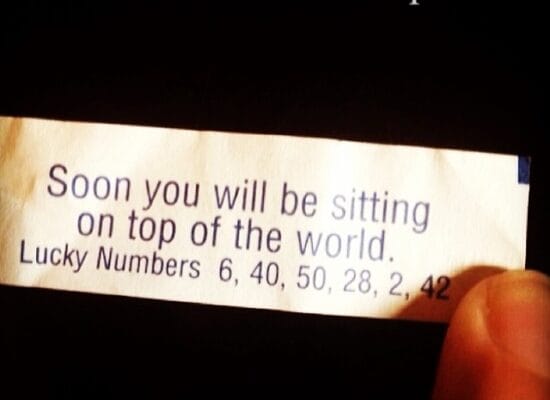
Nobukazu Kuriki who was climbing Everest’s West Ridge alone, try no supplemental O’s, was evacuated from Camp 2 in the Western Cwm to a Kathmandu hospital with severe frostbite today.
He experienced high winds, and extreme cold on his summit attempt while on the Ridge. Frostbite is one of the risk of climbing without supplemental oxygen at extreme altitude in harsh conditions.
A Rare Attempt
The 30 year-old Japanese was attempting something almost unheard of in modern times doing a solo climb, without supplemental oxygen of the West Ridge on Everest in the Fall. Any of those characteristics would be impressive; all of them are amazing beyond imagination.
He has been diligent in keeping us informed through Facebook, Twitter (EN), Twitter (JP)and his website.
Climbing alone is his “style” of climbing. He has quite the following in Japan. This was his fourth attempt on Everest with the last in the Fall of 2011. He has solo climbs of McKinley (2004), Aconcagua, Elbrus, Kilimanjaro all in 2005 and Carstensz Pyramid in 2006. Plus these 8000m climbs: Cho Oyu (2007), Manaslu (2008), and Dhaulagiri (2009). You can read more about Kuriki at this link.
Only a few teams attempt Everest in the autumn season each year due to shortening, cold days and the quickly approaching winter snows. In addition to Kuriki, a Polish team was attempting Lhotse and a Korean team Everest using the traditional South Col route. Both have stopped their attempts due to high winds.

Summit Push Stopped
Kuriki had started his climb on September 12 arriving at Base Camp with a support team. He did the normal series of acclimatization rotations into the Western Cwm and noted favorable snow conditions and was optimistic he could achieve his dream. He was posting videos on YouTube showing his progress.
He left Camp 2 in the Western Cwm on October 13 for the summit planning on using two additional camps. He left his Camp 3 at 7500m just below the Ridge proper on October 15. He had reached the base of the Hornbein Couloir when he called for help. Sherpas from his base camp were sent to meet him as he descended from the West Ridge. He had reported cold hands, could not move his fingers and had frostbite on his nose.
On Wednesday, October 17, he reported strong winds on the West Ridge, a poor forecast and the end of his climb from his Facebook page, translation by Bing:
Announcements from kuriki Office: from Everest’s West Ridge route that was moving toward a Summit, but unfortunately decided to climb down ( 9:15) 6:00 koroni. Wind from it several times body floating in a too strong wind and was so blown away, acting in more than 8000 m was determined to proceed further because becoming a level which causes disability or rolling sliding storm forecast, dangerous.
On Friday, October 19, his condition was reported as serious with frostbite on his extremities, translation by Bing:
Announcements from kuriki Office: Sorry, your concern and apologize to everyone. Temperatures below 20 degrees, minus average wind speed 25-rescue Sherpas since yesterday because with the finger makes frostbite climb at 30 m / s environment for a long time, and was not hydrated, going down the mountain on their own towards, 10/20 this time 9:30 still continues going down the mountain toward camp 2 (6400 m).
And today, Sunday, October 21, they announced his rescue from Camp 2 back to Kathmabdu, translation by Bing:
Kuriki Office from news: yesterday we descent to camp 2 (6400 m), become a finger with serious frostbite feet fingers and nose, soon returned home, ment needs are determined, headed to Kathmandu by helicopter from Camp 2 this morning and was admitted to hospital earlier.
He was airlifted via a Fishtail Air helicopter from Camp 2 at the base of the Lhotse Face. The helicopters flown by Fishtail Air can land at C2 (21,500′) and evac people. It was done numerous times in the spring. The helicopter has actually placed it’s landing skids on the summit for 30 seconds (deemed a landing) in 2005. For more details, see my post about helicopter rescues on Everest.
Frostbite can occur even with extra O’s. The O’s keep you warmer and helps prevent the body from shunting blood flow to fingers, toes and nose in order to save the core in extreme conditions.

Solo Attempts
As a side note on the “alone”, there is a fair amount of controversy about Kuriki’s claim of “solo” given he had Sherpa support at some level and used the ladders in the Icefall that were set by other teams or Sherpas. I prefer the term alone or unsupported above C1 instead of solo but that is what gets sponsors. The term “unaided” is also used.
The first true “solo” was Reinhold Messner’s August 20, 1980 north side climb truly alone – no Sherpas, no teammates, no one else on the mountain, no ropes, no ladders, no Oxygen. It is virtually impossible to be “alone” on Everest these days. Even this year, with the two other teams on the South side, there were over 50 people.

Everest West Ridge
There are 19 named routes on Everest with 97% of the activity happening on the South Col (Southeast Ridge) or North Col (Northeast Ridge) routes. In recent years, there are 300 to 500 summits via those routes annually.
The West Ridge of Everest is the highly visible ridge forming the north side of the Western Cwm and also very prominent when viewed from the Tibet side.
According this excellent article on ExWeb, there have been about 17 summits using either the West Ridge Direct (10), from the Western Cwm (5) or from Tibet (2). There have been 11 deaths, including 6 French climbers from an avalanche in 1974. It was last climbed in 1989 and attempted by 21 teams over the years.
For background on the West Ridge route, Croatian mountaineer, Stipe Boži?’s documented his 1979 climb on this link. It is a great story with some amazing photos.
Two very strong teams of professional climbers attempted the West Ridge this spring but were stopped when conditions up the already dangerous ridge were deemed icy and too dangerous to attempt.
My wishes for his recovery and full admiration for this courageous attempt.




4 thoughts on “Japanese Climber Evac’d off Everest after Abandoned West Ridge Attempt”
Hi Alan,
Thanks for keeping us posted. Hope he makes a full recovery
Zachary Zaitzeff
His latest post shows his hands bandaged and he says he is flying back to Japan today and his frostbite is “serious”
Good coverage of this story, Alan. I was very interested in the piece about Alison Hargreaves, I didn’t know she had done that. Very gutzy!
I can see why the West Ridge is so attractive; it looks brutal.
Wishing Nobu- san a quick recovery!
-Joe
Comments are closed.